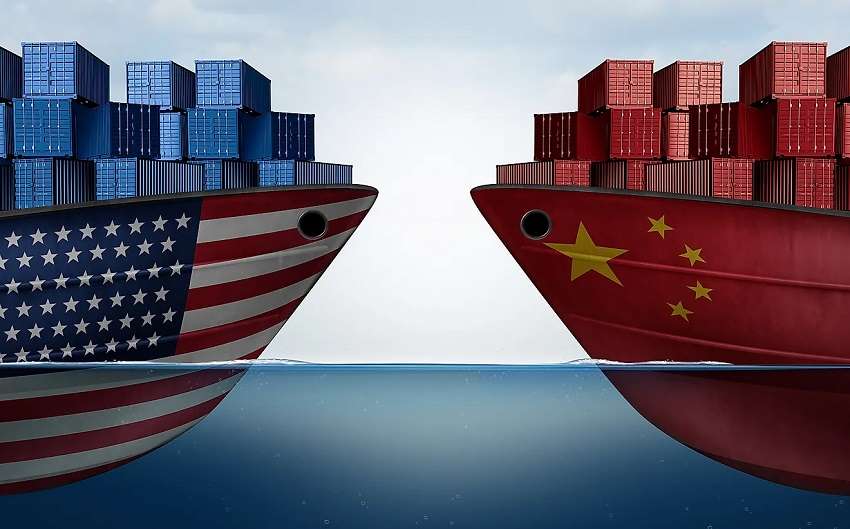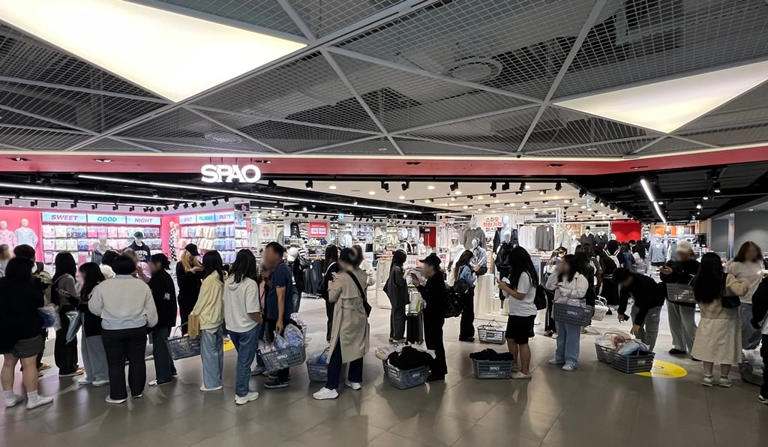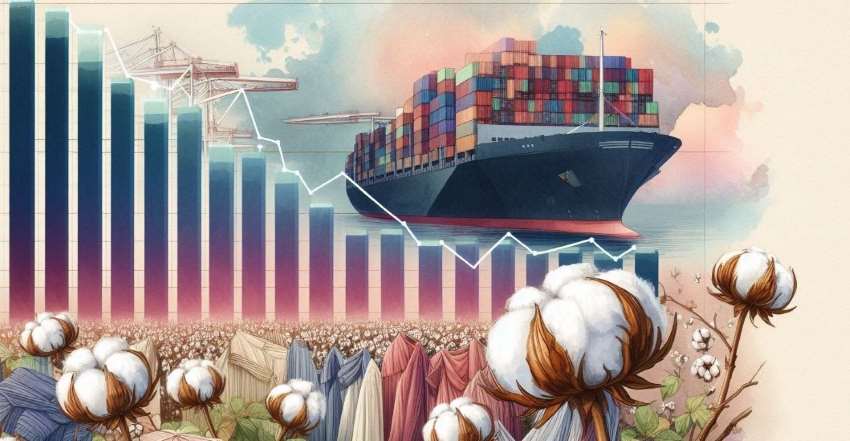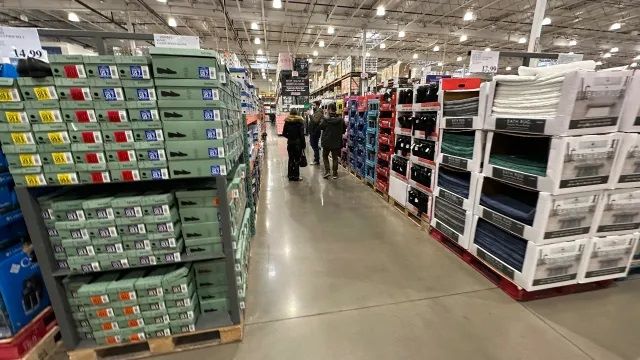FW
The UK Fashion & Textile Association (UKFT) has announced that Chief Executive Officer John Miln will be stepping down and Adam Mansell will step into his role as of January 2016.
Having held the position since 2011, Miln’s leadership has been instrumental in the growth and success of the association as it now stands and the businesses it has helped develop and grow. Prior to UKFT, Miln’s entire career has been in textiles and apparel, working in global multinationals, UK branded enterprises and SME’s in various senior executive board roles in the UK, Europe and internationally. Miln will stay on as a Consultant to UKFT.
Adam Mansell, current Director of Special Projects at UKFT, will succeed John Miln and assume the role in January 2016. As Director of Special Projects at UKFT, his focus has been on increasing the membership offer, including overseeing the introduction of a new Retail Partner Programme, as well as introducing the UKFT Masterclasses and running an environmental programme, which has seen UK dyers and weavers significantly reduce their CO2 emissions.
Along with his work at UKFT, Mansell is a Director of Wulff Consultancy; a consultancy for the fashion and textile industry and has recently been elected as President of Ginetex, the organisation that owns the trademarked care labelling symbols. Having previously worked in the accountancy and publishing sectors, Mansell joined the textile and clothing industry 20 years ago. With experience representing all aspects of the fashion and textile supply chain, he has links to every part of the industry from design, fabric and component suppliers, wholesalers, brands, manufacturers and retail.
www.ukft.org
The government is likely to concede to Congress’ demand to do away with the one per cent tax on interstate sales, which was proposed to compensate manufacturing states such as Maharashtra, Gujarat and Tamil Nadu who feared a loss of revenue in the new indirect tax regime. The government, however, is keen to keep rates reasonable so that any inflationary impact of the goods and service tax is contained.
The proposed GST seeks to replace excise duty, service tax, value added tax, entry tax and octroi with a single levy and create a unified national market in the country from April 1, 2016. GST has been touted as the most comprehensive reform of indirect taxes since independence. It’s estimated it could lift the country’s GDP growth by one to two percentage points.
The tax will be levied on manufacture, sale and consumption of goods and services. It will transform India into a uniform market by breaking the current fiscal barrier between states. GST will facilitate a uniform tax levied on goods and services across the country.
GST will facilitate a climate of improved tax compliance. It also offers a solution to multinationals as it breaks down the indirect tax structure into one single tax payable by the companies.
Andhra Pradesh government is planning to waive loans to the handloom and power loom sectors. Under this scheme, loans worth Rs 110.96 crores will be put off. The loan waiver would be implemented from January 2016. To be implemented at one go, the scheme will benefit 24,209 weavers whose total loans amounted to Rs 82.84 crores. Besides this loans worth Rs 11.83 crores availed of by 674 weaving clusters and Rs 16.27 crores borrowed by 584 power looms would be waived.
Loans against weavers’ credit cards and individual loans up to Rs 1 lakh, weavers’ group loans up to Rs 5 lakh, loans up to Rs 1 lakh availed of by power loom units with a below five HP power connection and availing of the 50 per cent power subsidy scheme will be eligible for the loan waiver under the scheme.
Andhra Pradesh is an important state for handloom. There are about 2,00,310 handloom weavers in the cooperative fold and 1,58,902 outside the cooperative fold. There are about 81,000 power looms working in the state. The handloom industry has the advantage of flexibility of small production quantities, being amenable to innovations, low investment, labour intensive and adaptability to market requirements. India has the world's largest installed base of looms.
"An estimated $48 million in duties are levied on US exports of textiles and apparel products in TPP markets including Australia, Brunei, Canada, Chile, Japan, Malaysia, Mexico, New Zealand, Peru, Singapore and Vietnam, every year and $835 million were levied in new TPP markets such as Brunei, Japan, Malaysia, New Zealand, and Vietnam in 2014. Certain textiles and apparel exports face tariffs as high as 34 per cent in new TPP markets however, the report indicates that the US would be able to report duty savings in year one under TPP and savings from the new TPP markets may be as high as $932 million."

A factsheet released by the US Department of Commerce reveals, the Trans-Pacific Partnership (TPP) will create exciting export opportunities for the US textile and apparel industry. The report highlights Vietnam and Japan as the two promising markets in TPP for certain textile and apparel products ‘Made in USA’.
New opportunities open up

Products from the US textiles and apparel sector include man-made fibres, yarn, knit and woven fabric, non-wovens, industrial and advanced textile materials, knit and woven apparel, carpets and rugs, and home furnishing products. The report states that Japan will eliminate import taxes on 99.2 per cent of US textiles and apparel exports immediately and Vietnam will eliminate import taxes on 98.4 per cent and 100 per cent within four years. Malaysia too will eliminate import taxes on 79.2 per cent and New Zealand – 50 per cent immediately with the latter increasing the limit to 100 per cent in seven years, on US textiles and apparel exports.
An estimated $48 million in duties are levied on US exports of textiles and apparel products in TPP markets including Australia, Brunei, Canada, Chile, Japan, Malaysia, Mexico, New Zealand, Peru, Singapore and Vietnam, every year and $835 million were levied in new TPP markets such as Brunei, Japan, Malaysia, New Zealand, and Vietnam in 2014. Certain textiles and apparel exports face tariffs as high as 34 per cent in new TPP markets however, the report indicates that the US would be able to report duty savings in year one under TPP and savings from the new TPP markets may be as high as $932 million.
Opportunities for select textile products
The United States is a globally competitive manufacturer of textiles. Textile industry workers are highly skilled and the industry is technologically advanced, with investments of $1.6 billion in total capital expenditures in 2013. In recent years, US textile companies have focused on retooling their businesses, finding more effective work processes, and investing in niche products and markets.
In 2014, the United States exported $394 million worth cotton fibre, yarn, and woven fabric to Vietnam, making the United States the second largest supplier of such products to Vietnam, behind China. US exporters hold 16 per cent of the Vietnamese market for these goods even though they face tariffs of up to 12 per cent. Under TPP, Vietnam will eliminate these tariffs immediately, giving US cotton textile manufacturers an opportunity to increase their already significant exports to the Vietnamese market.
Since 2009, US exports of synthetic fibres, yarns, and fabrics to Japan have grown by 61 per cent, and last year US manufacturers exported $91 million of these products to Japan. However, US exporters face tariffs on their goods ranging from 2.7 per cent to 10 per cent. However, under TPP, these tariffs will be eliminated immediately, further opening the Japanese market to US synthetic textile manufacturers.
In 2014, the United States exported $91 million of industrial and advanced textile fabrics to Japan, where the United States is the fourth largest supplier of these fabrics, behind only China, South Korea, and Taiwan. Similarly, in 2014, the United States exported $27.7 million of industrial and advanced textile fabrics to Malaysia, where the United States is the second largest supplier of these fabrics, behind only China. US exports currently face tariffs of up to 8.2 per cent in Japan and 20 per cent in Malaysia and under TPP, nearly all these tariffs will be eliminated immediately further benefiting the US exports.
Japan, Vietnam open-up opportunities
Vietnam has a vibrant and rapidly expanding textile industry. The Vietnamese market offers tremendous opportunity for all types of US textile businesses and workers, including producers of nonwoven fabrics used, for example, in filtration, surgical gowns, and protective apparel. Exports of non-woven fabric to Vietnam are an especially promising opportunity for US manufacturers. US exports of non-woven fabric to Vietnam grew an impressive 951 per cent from 2009 to 2014, to $23 million. The United States will continue to see export growth in this sector. Under TPP, Vietnam will eliminate its tariffs on non-wovens, which average 12 per cent, immediately.
The ‘Made in USA’ label has great appeal in the Japanese market. One segment with significant potential for US-made product is men’s and boys’ trousers and knit shirts. Japan is the fifth largest market for the United States in these product areas, behind Canada, Mexico, Honduras, and the United Kingdom. US exports of men’s and boys’ trousers and knit shirts totalled $32.6 million in 2014, an increase of 30.9 per cent from 2009. Under TPP, Japan will eliminate its tariffs on these products, which average 9.8 per cent, immediately. Since Japan is a fashion leader across Asia, success in Japan can significantly raise a brand’s visibility in other Asian markets.
One of the most important trends in the domestic textile industry is the growing role of industrial and advanced textiles, which are manufactured primarily for their technical performance and functional properties, rather than their aesthetic or decorative characteristics. Industrial and advanced textiles are used in the aerospace, industrial, marine, medical, military, public safety, and transportation fields. The global industrial and advanced textile industry has seen rapid growth in the past few decades, and Japan has become a prime location for the consumption of industrial and advanced textiles. US exports of industrial and advanced textile materials to Japan totalled $90.6 million in 2014, an increase of over 100 per cent from 2009. Under TPP, Japan will eliminate its tariffs on these products, which average 4.2 per cent.
Benefits for domestic manufacturers
The most sensitive products to domestic industry, such as sweaters, shirts, trousers, and industrial textiles, will be subject to lower up-front tariff cuts and longer tariff phase-out periods than other textile products, reflecting careful consideration of US domestic interests and helping to preserve commercial relationships with Western Hemisphere trading partners.
The “yarn-forward” rule will promote the use of fibres, yarns, and fabrics made in the United States and other TPP countries, ensure that domestic manufacturers have an opportunity to develop new business in the region, and incentivize foreign direct investment in regional textile manufacturing.
TPP includes a special textile safeguard mechanism which will provide for temporary re-application of tariffs if imports under the agreement are shown to be causing or threatening to cause serious damage to domestic industry. The report points out that significant cuts or duty-free treatment on all apparel tariffs, which can be as high as 32 per cent, on day one of the agreement will provide meaningful opportunities for brands and retailers to realise millions of dollars in cost savings. The TPP will give brands and retailers flexibility to source inputs from outside the TPP countries if they are not commercially available from TPP suppliers.
www.trade.gov
Traders and analysts expected the current cotton season from August 2015 to July 2016 in Pakistan to produce a record cotton output of nearly 15 million bales (155 kgs). However, the current situation indicates that the country will miss that projection by a wide margin. According to traders in Karachi, a toxic mixture of poor cottonseeds supply for sowing purpose, poor weather conditions and consequent pest attacks have adversely impacted this year's cotton production by nearly four to five million bales (155 kgs).
Thus the cotton output for Pakistan for the current season (2015/2016) is expected to be between 10 to 10.5 million bales (155 kgs) while the textile mills are projecting their consumption between 14 and 14.5 million bales. Imports of cotton this season may range from 2.5 to 3 million bales, while the exporters may ship anywhere from 300,000 to 350,000 bales.
On the other hand, manufacture and sale of yarns and other textiles continue to witness a downward trend. According to the cotton arrivals report of the Pakistan Cotton Ginners Association (PCGA) showing seed cotton (Kapas/Phutti) arrivals for the current season (2015/2016) in Pakistan till the 1st of December, 2015, at 8,631,933 lint equivalent bales (155 kgs) compared to 12,145,705 bales received for this period during the last season (2014/2015), or a decrease of 28.93 per cent. Domestic mills have picked up 6,289,826 bales. An unsold quantity of 1,989,708 bales is lying with the ginners in both pressed and loose form.
The agriculture season of 2015-16 is expected to witness a relative fall in cotton production, feels Tanzania Cotton Board (TCB) acting director, Gabriel Mwalo. Reason: lack of quality seeds for farmers. Mwalo points out that over the years, with a deficiency of formal system of seed production, cultivation of cotton has been dependant on circuit waged cotton seed. Every year’s, seed stocks are the major source of procuring seeds. However, in this process of securing seeds the ignorance of farmers and agents has been a prominent obstacle. The germination procedure is affected as water is sprinkled on the cotton sold and brought. As a consequence, seeds reach rotting stage.
In order to seek better operations, TCB has taken certain steps. This farming season, almost 27 agents who invested in seeds have been briefed about allocating and reserving 21,380 tonnes of seeds for further plantation. Also, sorting centres plans to distribute a gross of 16,654 tons out of 21,380 tons seeds from the month of September, retaining about 4,726 tons for a crisis.
As acknowledged by Mwalo, farmers in the region are expected to be conscious of storing seeds and planting them in equal numbers to sustain quality production of cotton in major cotton yielding regions which are presently dealing with a deliberate issue of quality deficient cotton seeds.
Bangladesh hosted Taiwan Textile Fair from November 23 to 24. The trade show was all about fabrics and accessories. The aim was to provide a unique opportunity for business matchmaking between top manufacturers and exporters of Bangladesh. Participating companies were looking at exploring the Bangladesh market.
Taiwanese manufacturers want to explore their business in Bangladesh. As of now they have no direct investment in the country but are planning to invest in future. In particular they are looking at the fabric business in Bangladesh. They want to find local business partners, distributors and buyers.
Bangladesh is the second largest South Asian partner of Taiwan. Bangladesh mainly exports garments, jute, leather, handicrafts, knit wear to Taiwan and imports textiles, electronics, steel, plastics, machines. As more Taiwanese companies set up manufacturing bases in Bangladesh, trade is likely to expand.
More than a dozen Taiwanese companies are operating in Bangladesh, most of them being in labor-intensive industries such as textiles and the production of electrical goods. Taiwan is sending business missions to Bangladesh from the electronics, machinery, auto parts and hardware industries.
Organised by the Taiwan Textile Federation and the Bureau of Foreign Trade, the event was supported by Bangladesh Knitwear Manufacturers and Exporters Association.
From 2011 to 2015 Vietnam’s exports of textiles and garments have maintained steady growth and stability. Total exports in the first nine months of 2015 were up 10 per cent compared to the same period of 2014. In 2015, the target for export turnover increased 11.3 per cent compared to 2014, with localisation rate at 51 per cent.
The textile sector is expected to become the country’s second largest exporter, with Vietnam remaining among the top five leading textile exporting countries. In the next stage, when the Trans Pacific Partnership takes effect, tariffs on exported textiles to the US will be eliminated, which will also happen when the EU-Vietnam free trade agreement comes into being.
In the long term, these agreements are expected to promote development of textile industry, create jobs, attract investment in raw materials, dyeing and finishing, and boost competitiveness in the global textile value chain.
There is a strong need for enterprises in the Vietnamese textile industry to incorporate advanced technology from overseas. Total number of employees in the Vietnamese textile industry stands at 2.5 million and will rise to 2.8 million in 2016 and 3.3 million by 2020.
Indonesia is contemplating income tax cuts to support the labor-intensive footwear and textile industry. The proposal is to reduce employees’ income tax by as much as 50 per cent. The incentive is expected to last for five years and would come with terms and conditions. The tax cut would only be applicable for companies that export 50 per cent of their production and employ at least 5,000 workers and is expected to benefit the industry’s cash flow.
Indonesia is pushing efforts to revive growth in the labor intensive industry after the country’s economy weakened to the lowest level since 2009 in the past three quarters. Falling demand combined with soaring raw material prices, rising electricity tariffs and illegal imports have prompted manufacturers of shoes and textile goods to lay off workers. At least 40,000 workers at footwear factories and another 39,000 textile workers were dismissed in the first half of this year.
Requirements currently imposed on manufacturers to procure raw materials and to access financing will be eased. Buffer stocks of cotton and leather will be established to ensure steady supplies of raw materials. In addition, trade promotion efforts in the domestic market will be ramped up. Free trade agreements with the prime export markets of Indonesia's footwear and garment industries will be sought. This will make prices of Indonesian products more competitive in Europe.
India is looking at increasing textile and clothing exports. New markets like Africa are being explored to widen the geographical spread of export market and reduce dependence on the developed world — mainly the US and the EU. India is also likely to renew focus on some segments that are already doing relatively well so that the country’s dominance is further entrenched in those areas.
Diversification to Africa will help India in the long run. The need to tap new markets has arisen more than ever, as China’s economy is set for a prolonged slowdown and the developed world is still struggling with a fragile recovery. To promote textile exports in new markets, India has raised support to outbound shipments of more textile products under the Merchandise Exports from India Scheme (MEIS). Most textile and garment items, which were earlier not eligible for many benefits, are now granted a three per cent duty credit scrip under the MEIS to tap markets such as those in Africa.
Overall textile and garment exports rose 0.6 per cent in the first half of the current fiscal from a year before while the country’s overall exports plunged by 17.6 per cent during the period.












